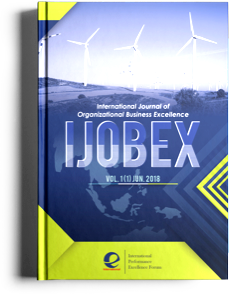Abstract
Halal packaged food products have attracted much attention in ASEAN where its largest member, Indonesia, is the world’s most populous Muslim country and is a major market in the region. For non-Muslim country like Thailand, Islam also has significant role being the second popular religion after Buddhism. Although Islamic population in Thailand is not as great as in Islamic countries, Thailand plays a substantial part in halal business as beingrecognized as a food production base exporting halal food worldwide. Therefore, the major objective of this study is to identify and analyze the significant factors that influence purchase intention of Thai and Indonesian Muslims toward halal packaged food products from non-Muslim manufacturers. This study used a survey to collect data consisting of 200 Thai respondents and 200 Indonesian respondents. The results indicated that product ingredients significantly influenced consumers’ intention to purchase both in Thailand and Indonesia while halal certification only significantly influenced consumers’ intention to purchase in Indonesia.
References
Food Act of Malaysia. (1983). Act 281. Laws of Malaysia: Percetakan Nasional Malaysia Berhad.
Ahmad, N., Abaidah, T. & Yahya, M. (2013). A Study on Halal Food Awareness among Muslim Customers in Klang Valley, Proceeding of 4th International Conference on Business and Economic Research. Alserhan, B.A. (2010). Islamic branding: A Conceptualization of Related Terms. Brand Management, 18(1), 34-49.
Aziz, A., Y. & Chok, N. V. (2013). The Role of Halal Awareness, Halal Certification, and Marketing Components in Determining Halal Purchase Intention among Non-Muslims in Malaysia: A Structural Equation Modeling Approach. Journal of International Food & Agribusiness Marketing, 25(1), 1-23.
Aziz, A., Y. & Vui C.N. (2012). The Role of Halal Awareness and Halal Certification in Influencing Non-Muslims' Purchase Intention, Proceeding of 3rd International Conference on Business and Economic Research, Bandung, Indonesia, 1819-1830.
Central Intelligence Agency. (2015). The World Factbook. Retrieved from https://www.cia.gov/library/publicationsZt he-world-factbook/geos/th.html.
Daganghalal. (2015). World of Halal. Retrieved from http://www.daganghalal.com/HalalInfo/WorldOfHalal.aspx.
Golnaz, R., Zainalabidin, M. & Mad Nasir, S. (2012). Assessment of Consumers' Confidence on Halal Labelled Manufactured Food in Malaysia. Pertanika J., Soc. Sci. & Hum., 20(1), 33 - 42.
Golnaz, R., Zainal, A.M., Shamsudin, M.N. & Chiew, E. (2009). Concern for Halalness of Halal-Labelled Food Products among Muslim Consumers in Malaysia: Evaluation of Selected Demographic Factors. Economic and Technology Management Review, 4, 65-73.
Grewal, D., Krishnan, R., Baker, J. & Borin, N. (1995). The Effect of Store Name, Brand Name and Price Discounts on Consumers' Evaluations and Purchase Intentions. Retrieved from http://digitalcommons.calpoly.edu/cgi/vie wcontent.cgi?article=1010&context=mkt_f ac.
Hair, J., Black, W., Babin, B., Anderson, R., & Tatham, R. (2006). Multivariate Data Analysis. Upper Saddle River, NJ: Prentice Hall.
Halim, M.A. & Salleh, M.M. (2012). The Possibility of Uniformity on Halal Standards in Organization of Islamic Countries (OIC), World Applied Sciences Journal, 17, 06-10.
Hamdan, H., Issa, Z.M., Abu, N., & Jusoff, K. (2013). Purchasing Decisions among Muslim Consumers of Processed Halal Food Products. Journal of Food Products Marketing, 19, 54-61.
O'Brien, R. (2007). A Caution Regarding Rules of Thumb for Variance Inflation Factors. Quality & Quantity, 41 (5), 673-690.
Pew Research Center. (2009, October). Mapping the Global Muslim Population. Retrieved from http://pewforum.org/newassets/images/re ports/Muslimpopulation/Muslimpopulation.pdf [October 20, 2015]. Riaz, M.N. (1998). Halal Food: An Insight into a Growing Food Industry Segment. Food Marketing and Technology, 12(6), 6-9.
Teo, T.S.H. (2001). Demographic and motivation variables associated with Internet usage activities. Internet Research, 11, 125-137.
Wilson, J., & Liu J. (2011). The challenges of Islamic branding: navigating emotions and halal. Journal of Islamic Marketing, 2(1), 28-42.
Yamane, T. (1967). Statistics: An Introductory Analysis 2nd Ed. New York: Harper and Row.
Yunus, N., Rashid, W., Ariffin, N., & Rashid, N. (2014). Muslim's Purchase Intention towards Non-Muslim's Halal Packaged Food Manufacturer. Procedia - Social and Behavioral Sciences, 130, 145-154.

This work is licensed under a Creative Commons Attribution-NonCommercial-ShareAlike 4.0 International License.
Copyright (c) 2019 BINUS Higher Education

